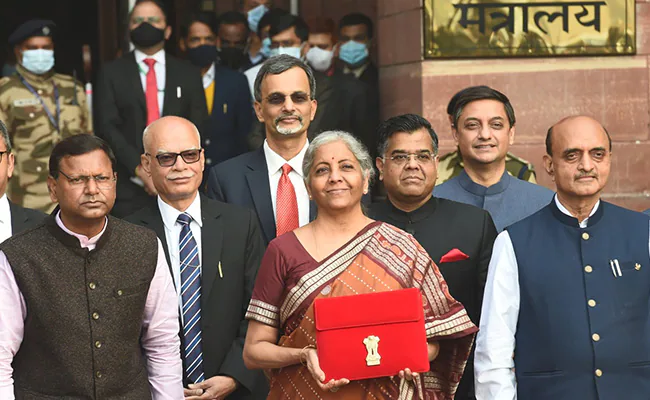
Table of Contents
- Importance of Ayodhya Ram Mandir
- The Establishment of the Shri Ram Janmabhoomi Teerth Kshetra Trust
- Details About Shri Ram Statue
- Most Significant Donations to Shri Ram Temple
- Famous Celebrities Who Donated to Shri Ram Temple
- The Boost in Uttar Pradesh's Income Owing to Shri Ram Temple
- More Insights into Ayodhya Ram Mandir
- Conclusion
- Frequently Asked Questions (FAQs)
Unveiling the Cost and Budget of Ayodhya Ram Mandir
In a historic event, Ayodhya in Uttar Pradesh organised the consecration ceremony of the Ram Mandir on 12 January 2024. The event drew 7,000 VIP devotees along with lakhs of the general public. Valued at Rs. 1,800 crores, this architectural marvel ranks as one of India's most significant religious projects, surpassed only by Gujarat's Vishv Umiya Dham, valued at Rs. 1,000 crores.

The construction and design of the Ram Mandir are under the capable hands of Larsen & Toubro and Tata Consulting Engineers. These Industry giants provide their expertise to bring this monumental project to life. Additionally, the technical assistance from the esteemed Indian Institute of Technology (IIT) ensures that the engineering aspects meet the highest standards, combining traditional aesthetics with modern engineering excellence.
While Hindus around the world are on the ninth cloud because of this establishment, the budget and expense of the temple have been the talk of the town. You've come to the right spot if you're also trying to figure out the same thing. Scroll down and find out every possible detail about Ram Mandir's budget and expenses.
Importance of Ayodhya Ram Mandir
The Ayodhya Ram Temple holds immense significance as one of the most revered pilgrimage sites for Hindus, believed to be the birthplace of Lord Ram. The sacred nature of this site is deeply ingrained in Hindu beliefs.
The Establishment of the Shri Ram Janmabhoomi Teerth Kshetra Trust
In February 2020, the Centre led by the Bharatiya Janata Party (BJP) announced the establishment of the Shri Ram Janmabhoomi Teerth Kshetra Trust, entrusted with the responsibility of overseeing the construction and management of Ayodhya's Ram Mandir. Since its inception, the Trust has garnered an impressive total of over Rs. 3,500 crores in donations. Notably, a substantial portion (60%) of these donations was received between February 2020 and February 2021, highlighting the widespread support and financial contributions from individuals nationwide for the monumental project.

Shri Ram Janmabhoomi Teerth Kshetra Trust's secretary, Champat Rai, revealed that between February 5, 2020, and March 31, 2023, an expenditure of Rs. 900 crores was incurred in constructing the temple. Notably, he mentioned that the trust still retains more than Rs. 3,000 crores in its Bank accounts; thus, it is well-prepared for construction and future maintenance. It should be noted that the construction of the entire temple is still ongoing, and according to reports, the first and second floors of the temple are expected to be completed by December 2024. Additionally, the carving work for the temple is anticipated to be finished by the end of 2025.
Check Here!
Details About Shri Ram Statue

The idol of ‘Ram Lalla’ or infant Ram, crafted by Mysuru sculptor Arun Yogiraj, is made of black stone, weighing approximately 15-200 kgs. The statue depicts the deity as a five-year-old boy in a standing posture.
Most Significant Donations to Shri Ram Temple
Dilipkumar V. Lakhi, the head of one of Surat's largest diamond factories, has substantially contributed to the construction of the Ayodhya Ram Mandir. His family's 101 kg of gold donation marks the most significant Offering received by the temple trust thus far. The gold will adorn various temple elements, including the doors, Sanctum Sanctorum, Trishul, Damru, and pillars. Notably, 14 golden gates, including the gate of the Sanctum Sanctorum (Garbhgriha), have been installed on the temple's ground floor. Following closely, the followers of Shree Ram Katha, led by the esteemed orator Morari Bapu, have made the second-highest donation of Rs.16.3 crores. Adding to this show of generosity, Govindbhai Dholakia, a prominent diamond businessman from Surat and the founder of Shree Ramkrishna Exports (SRK), has made a notable donation of Rs. 11 crores.
Famous Celebrities Who Donated to Shri Ram Temple
Several celebrities have made notable contributions to the construction of the Ram Mandir in Ayodhya, showcasing their support for this significant religious and cultural endeavour. Among them, UP Chief Minister Yogi Adityanath and former President Ramnath Kovind stand out for their substantial donations, with Yogi Adityanath contributing Rs. 11 lakhs and Ramnath Kovind offering Rs. 5 lakhs. Bollywood actor Akshay Kumar, known for his philanthropic efforts, also contributed to the cause. Prominent religious and spiritual leaders, such as Jaggi Vasudev, known as Sadhguru, have voiced their support for the Ram Mandir construction. Their endorsements bring attention to the cultural and religious significance of the project but also inspire their followers to contribute.
The Boost in Uttar Pradesh's Income Owing to Shri Ram Temple
Completing the Ram Mandir in Ayodhya and other tourism initiatives in Uttar Pradesh could contribute significantly to the state's finances. Experts suggest the state may gain between Rs 20,000-25,000 crores in tax revenue, thanks to the Centre's Pilgrimage Rejuvenation and Spiritual Heritage Augmentation Drive (PRASHAD) scheme. With the Ayodhya temple completion and efforts by the UP government to promote tourism, the total expenditure by tourists in UP is predicted to surpass Rs 4 lakh crores by the end of the year, potentially doubling compared to 2022. The surge in spiritual tourism is transforming UP's tourism landscape, improving infrastructure and connectivity. UP may also surpass $500 billion in GDP by FY28, contributing significantly to India's Economy.
More Insights into Ayodhya Ram Mandir
Here are some interesting facts about Ayodhya Ram Mandir:
- The Ram temple covers an expansive area of 2.7 acres, with a built-up area of 57,400 square feet.
- Its physical dimensions include a length of 360 feet, a width of 235 feet, and a height of 161 feet.
- The temple has three floors, each with a height of 20 feet, supported by a substantial number of columns—160 on the ground floor, 132 on the first floor, and 74 on the second floor.
- Beyond its religious significance, the Ram temple is a cultural hub featuring educational spaces and meditation areas.
- The construction avoids using steel or iron, opting for traditional materials to align with age-old building practices and demonstrate a commitment to sustainability.
- The main temple structure is built with Bansi Paharpur Pink Sandstone from Rajasthan's Bharatpur district, while granite stones are used in the plinths for durability.
- White Makrana and coloured marble are intricately used for inlay work, adding to the temple's aesthetics.
- Special bricks called "Ram Shilas" with the inscription "Shri Ram" are used, symbolically connecting modern craftsmanship with the ancient Ram Setu.
- Shaligram rock, a sacred fossil from the Gandaki River in Nepal, is included in the construction, symbolising Lord Vishnu.
- Chandrakant Sompura, the 15th-generation temple architect from Ahmedabad, is the mastermind behind the temple's design.
- Larsen & Toubro (L&T) pledged over 15 years ago to construct the temple, as confirmed by Ram Janmabhoomi Teerth Kshetra general secretary, Champat Rai.
- General entry to the temple is free, with passes issued for special 'Aartis.' Thirty persons can attend each 'Aarti.'
Conclusion
The Ayodhya Ram Mandir transcends being a mere physical structure; it symbolises the amalgamation of faith, heritage, and cultural richness. The dedication and contributions of individuals, spanning from ordinary citizens to renowned celebrities and influential business magnates, showcase the collective spirit that propelled this project forward. The meticulous planning, adherence to traditional construction practices, and symbolic elements like "Ram Shilas" and sacred Shaligram rock reflect a deep-rooted connection to India's rich heritage. The Ayodhya Ram Mandir is poised to become a focal point for spiritual seekers, scholars, and tourists, fostering cultural understanding and promoting India's rich tapestry of traditions. The temple's grand inauguration marks a momentous milestone, igniting a sense of collective celebration and a cultural renaissance for the nation.
Frequently Asked Questions (FAQs)
1. How to reach the Ayodhya Ram Mandir?
A: Convenient local transport options such as auto-rickshaws and cycle rickshaws are readily available upon reaching Ayodhya.
2. What are the Aarti timings?
A: The Ram Lalla Aarti takes place three times a day, allowing devotees to participate in the Jagaran or Shringar Aarti at 6:30 AM, the Bhog Aarti at 12:00 PM, and the Sandhya Aarti at 7:30 PM. To attend the aarti, you need a pass issued by the trust and valid proof of ID. Each aarti allows 30 people at a time.
3. What are the Darshan timings?
A: You can partake in the divine darshan from 7:00 AM to 11:30 AM and 2:00 PM to 7:00 PM.
4. Is there an entry fee for visiting the Ayodhya Ram Mandir?
A: General entry to the temple is free. However, passes for three types of Aartis, which are also free of cost, will be required.
All efforts have been made to ensure the information provided here is accurate. However, no guarantees are made regarding correctness of data. Please verify with scheme information document before making any investment.












